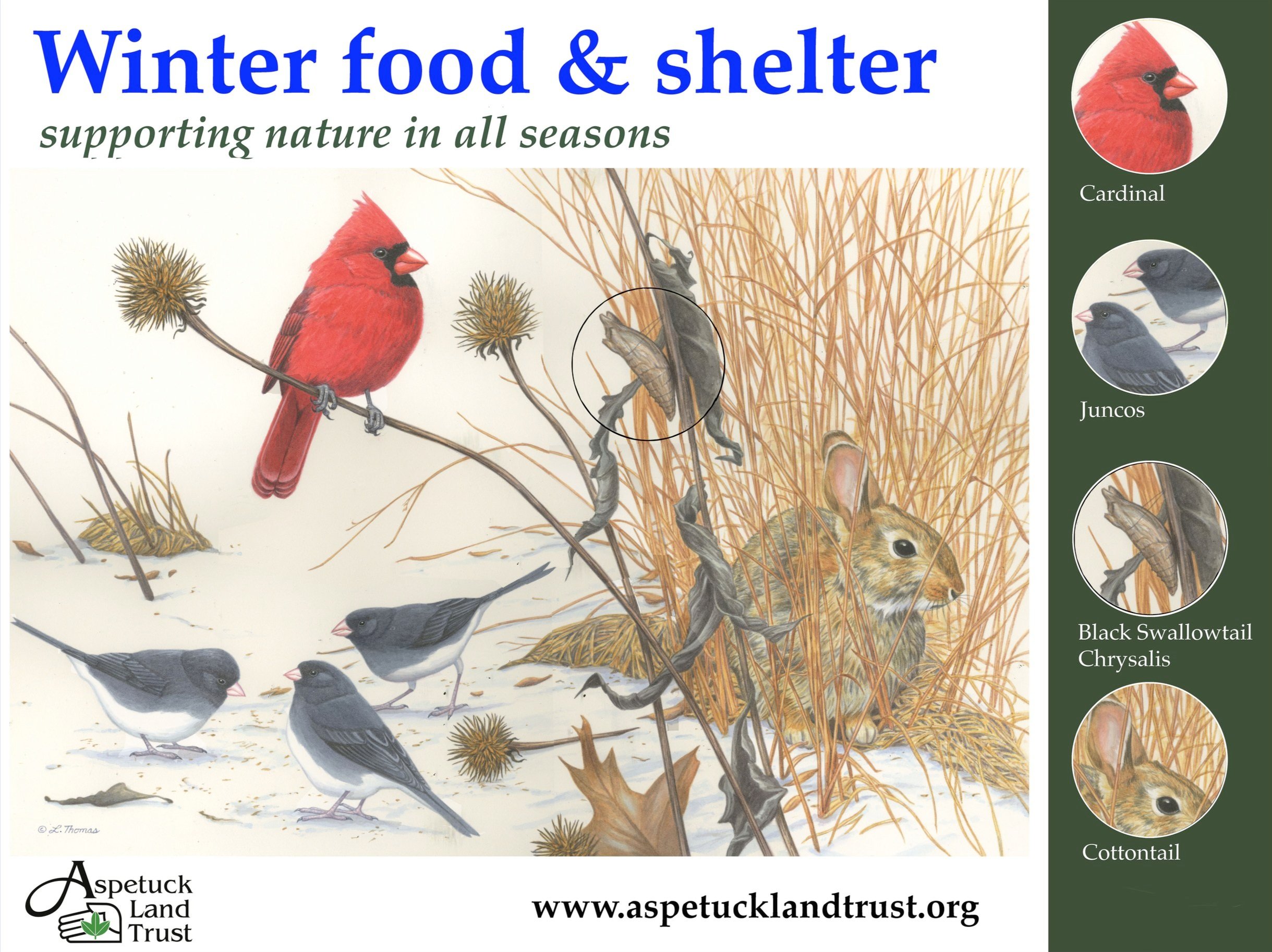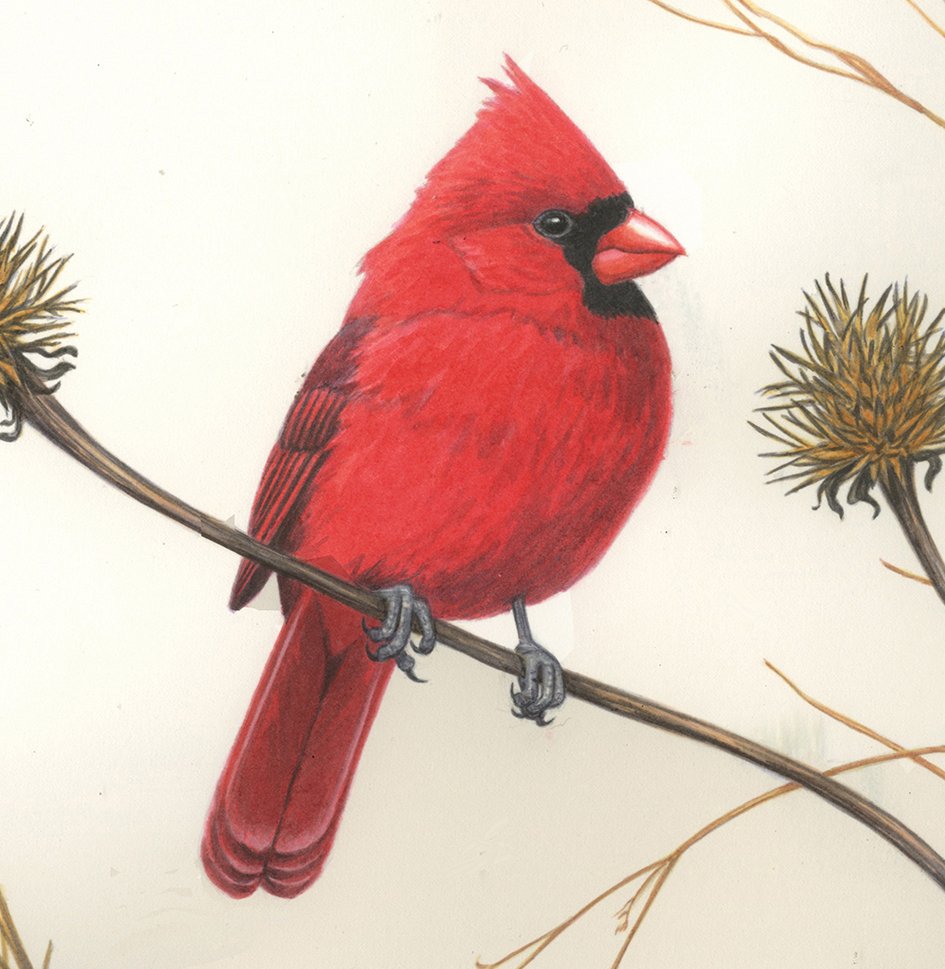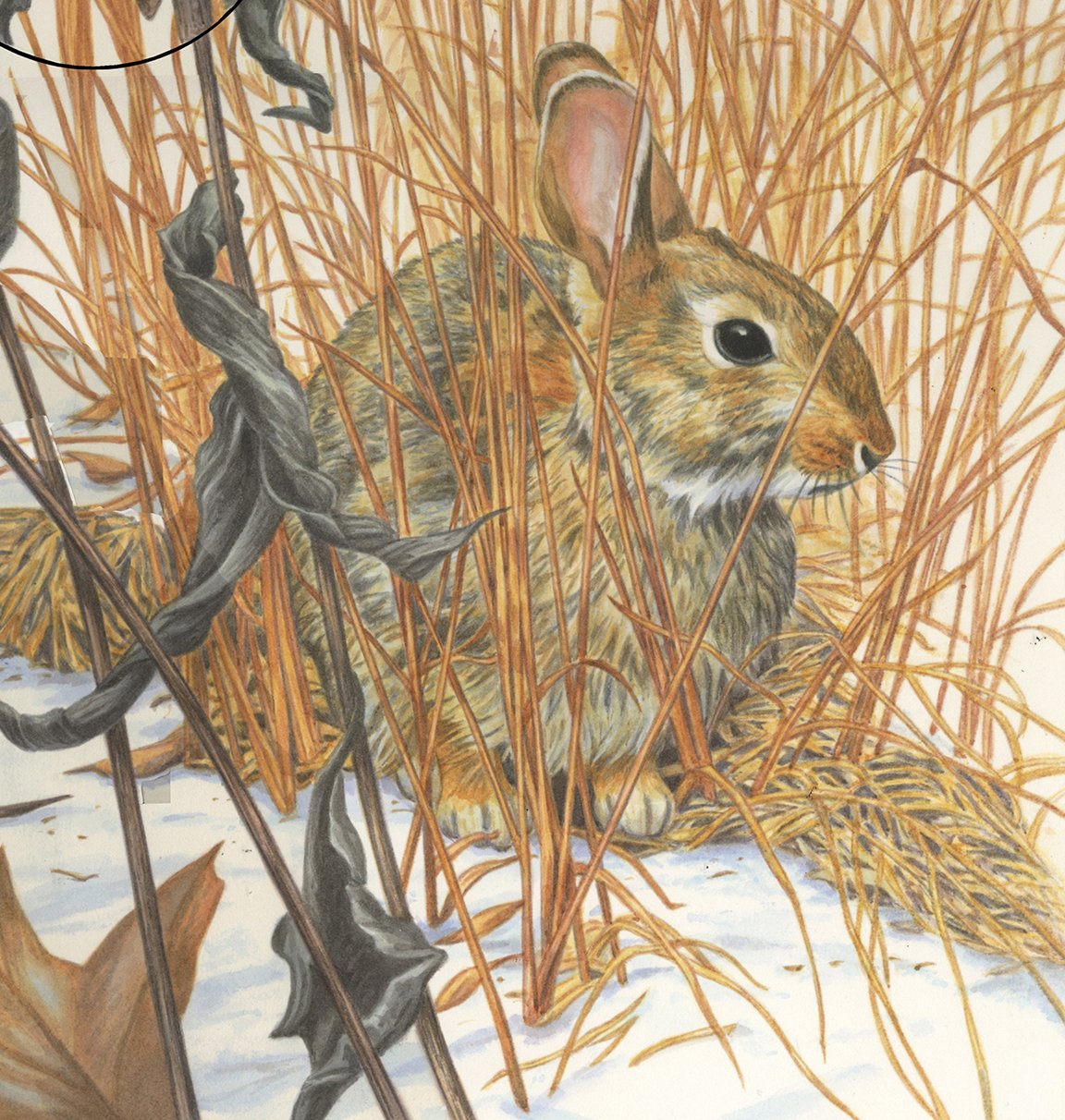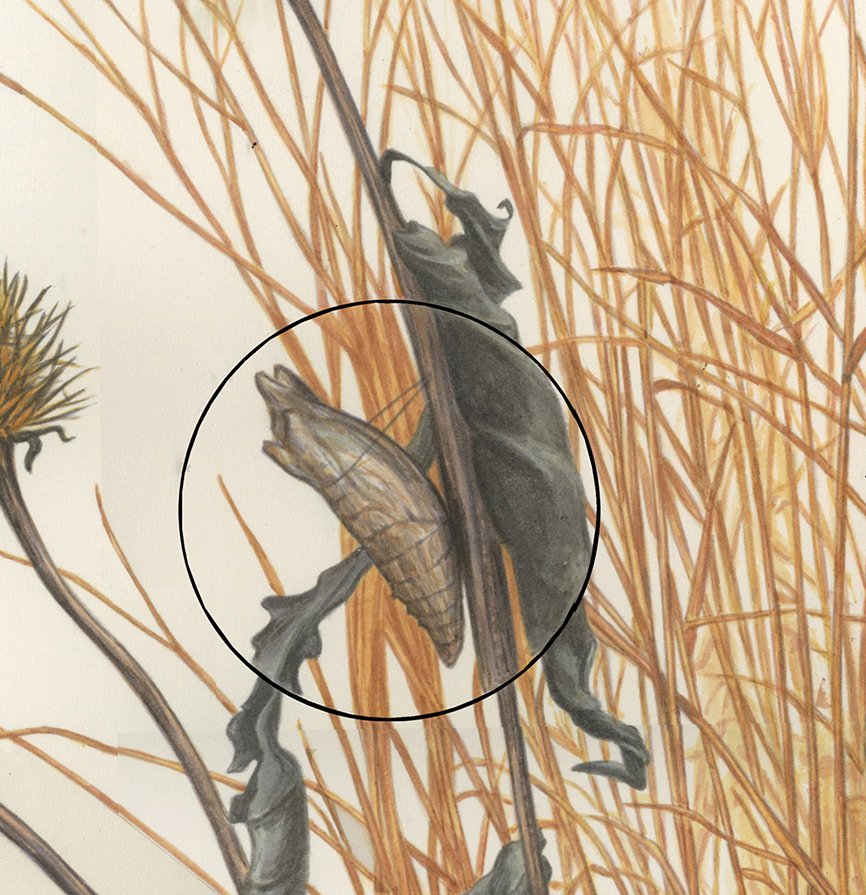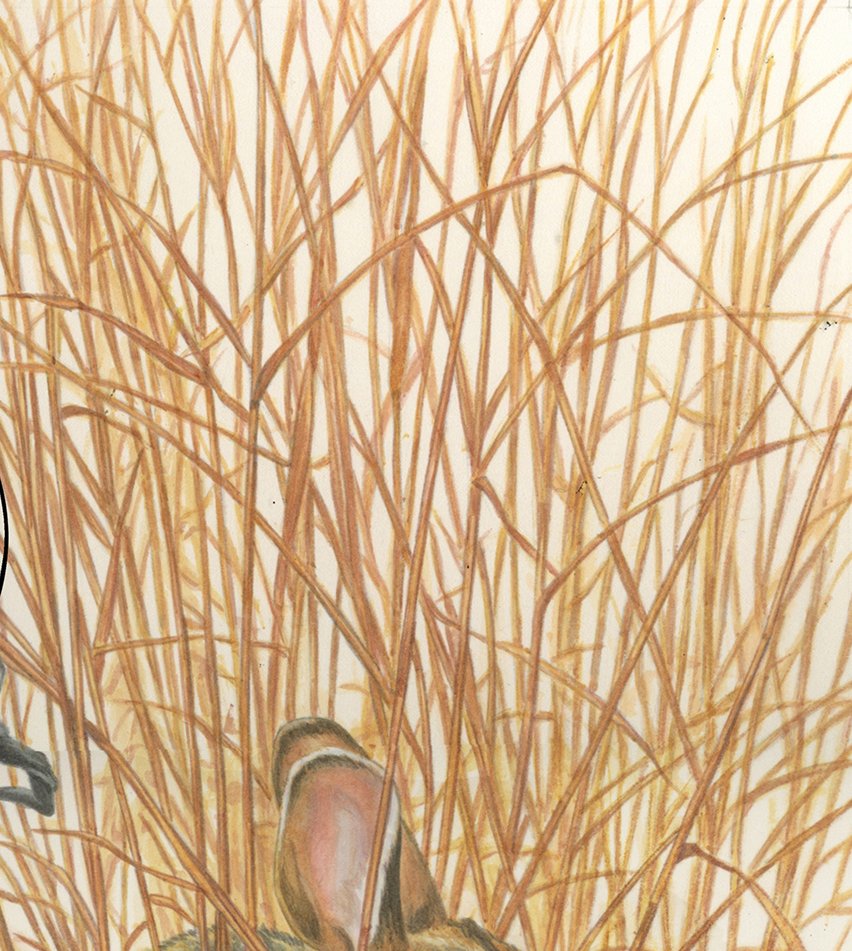Winter Food & Shelter
Winter brings a reduced color palette — but not a reduced palette of nesting, food, and shelter materials for creatures. Leaving elements like leaves, seedheads, and dormant grass in the landscape can attract wildlife in all temperatures.

Cardinalis cardinalis | The cardinal’s short beak is adapted to its diet of seeds, insects, and berries. While it’s common at home bird feeders, it visits woodland thickets to find a more varied food source.
Junco hyemalis | On apps like Cornell University’s Merlin Bird ID, you can listen to the Junco’s metallic trilling song, used to defend territory or find a mate.
Sylvilagus floridanus | These plentiful rabbits feed on bark, twigs, and buds in the winter; they move between open spaces to escape predators and find vegetation.
Papilio polyxenes | When you “leave the leaves,” rather than discarding them after raking, and pile branches and plant stems in the garden, they can provide habitat for pollinators like the black swallowtail butterfly. Notice how the butterfly disguises its chrysalis as a dried leaf.
Echinacea purpurea | A garden favorite in Aspetuck’s spring plant sales, Echinacea attracts butterflies and hummingbirds with its showy purple petals and ample nectar in the summer. But if you leave it standing in the winter, it becomes a source of seeds — aka nutrition — for overwintering birds.
Schizachyrium scoparium | The fuzzy white seeds of little bluestem feed birds during winter, and it stays standing, while faded, through the snow. Little bluestem is suitable as a ground cover or as a garden accent (transitioning from blue-green grass to winter seedheads). It’s also the host plant for several species of skipper butterflies.
